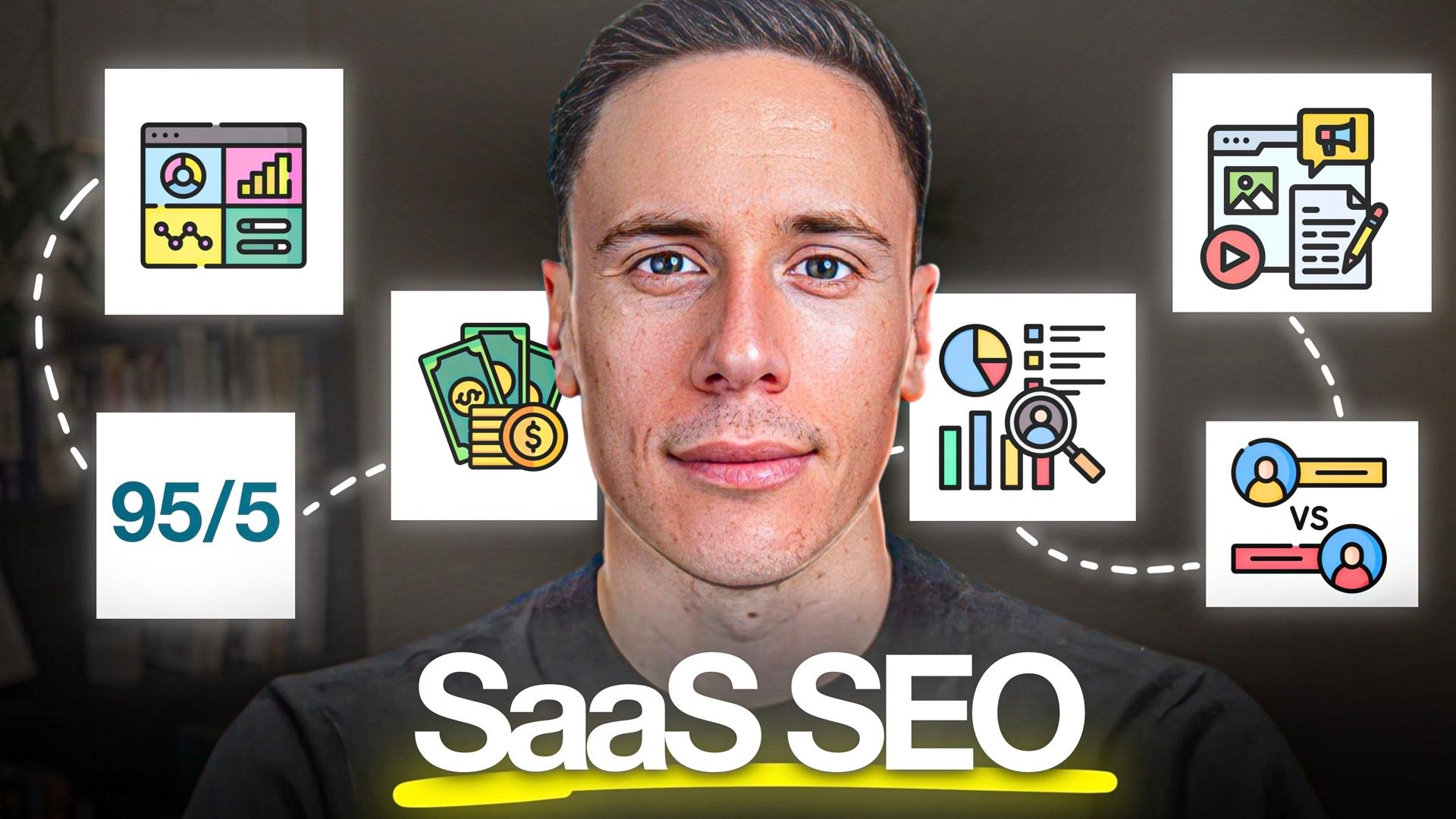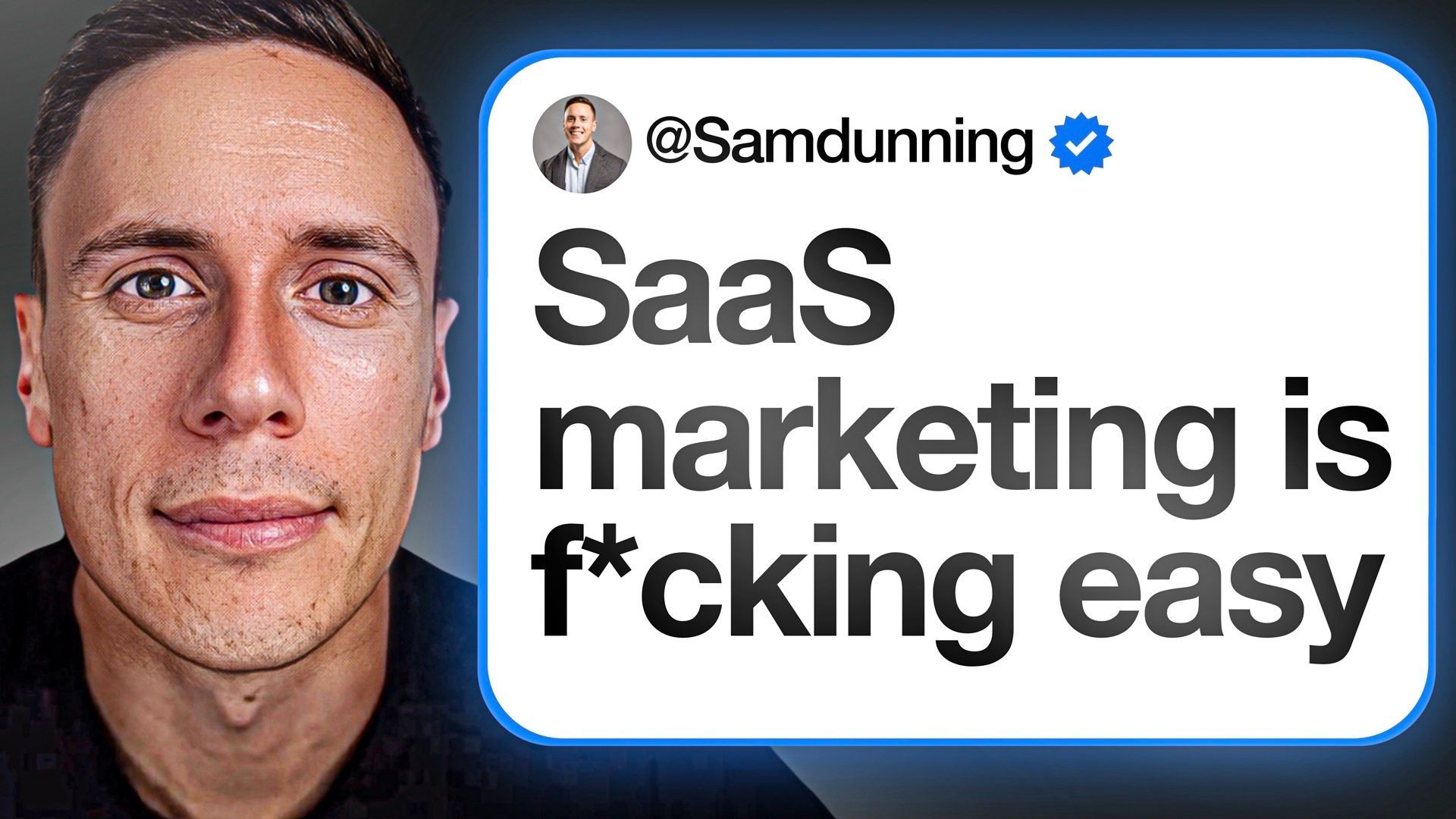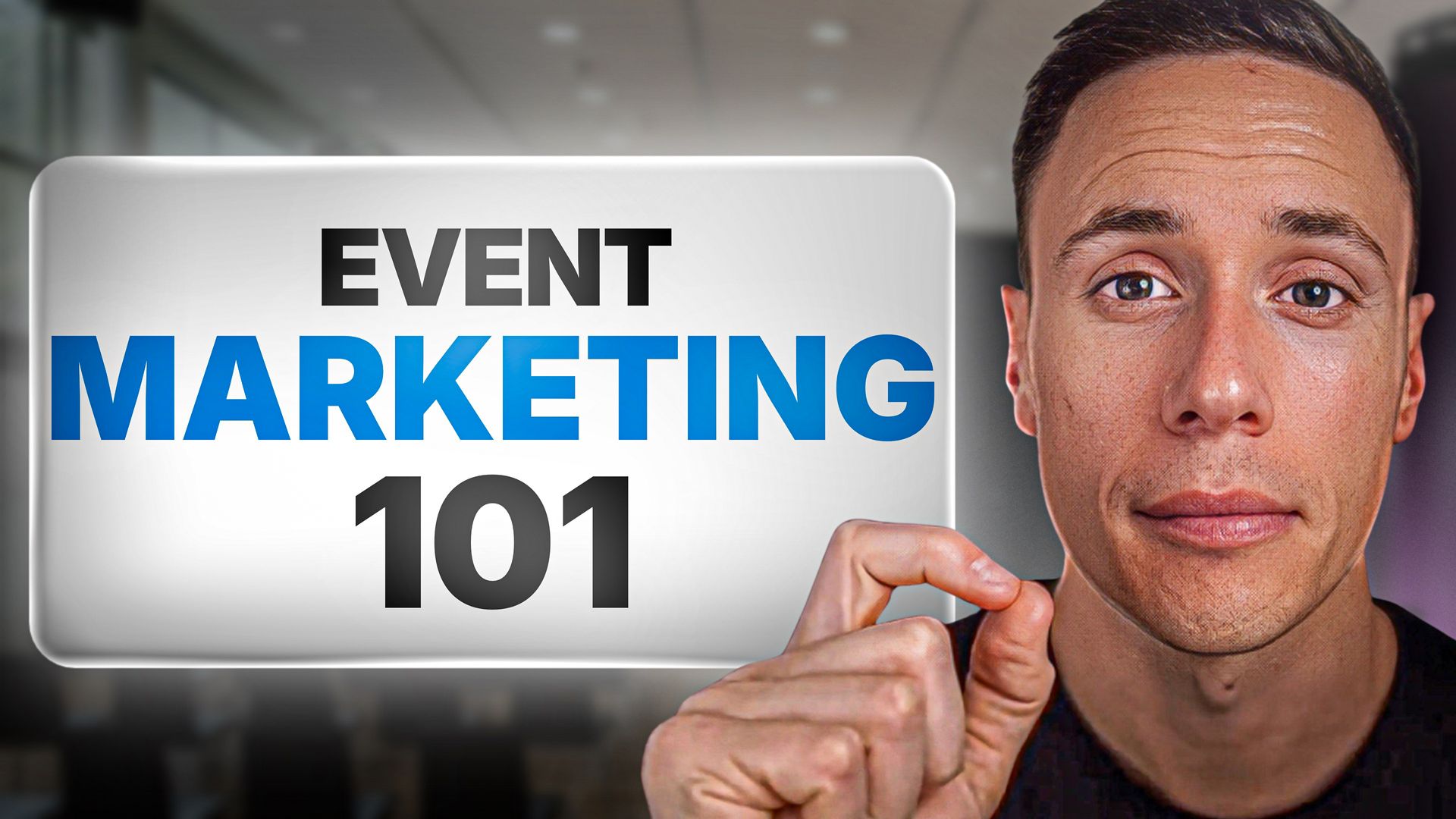Table of Contents
Ready To Grow Organic Pipeline & Revenue?
See if we can scale your organic pipeline from SEO as quick as 90 days.
Quick Summary
Looking to Improve Your B2B SEO ROI?
We’ve watched countless B2B companies burn marketing budgets on SEO campaigns that looked successful on paper but failed to drive real revenue. Traffic was up, rankings improved, but the sales team kept asking, "Where are the qualified leads?"
The problem isn't that SEO doesn't work for B2B. It's that most teams measure the wrong things. They celebrate keyword rankings while ignoring conversion rates. They track organic traffic while missing attribution gaps.
After helping many companies transform their approach, we’ve realised traffic volume in SEO is a means to generate revenue and not an end in itself. In this
Breaking B2B guide, we share our step-by-step guide on how to set up proper attribution tracking, define revenue-focused KPIs, and implement strategies that actually move the needle for your bottom line.
Why Listen to Us?
At
Breaking B2B, we specialize in SEO strategies that drive real growth for B2B companies. We've helped brands achieve higher rankings, increased traffic, and better conversions through data-driven SEO, content strategy, and technical optimization. Our expertise comes from real-world results—working with companies like Ahrefs, Buzzacott, Payara, and Vidyard to scale their organic search performance. For more practical insights on outranking your competitors, feel free to visit our
blog.
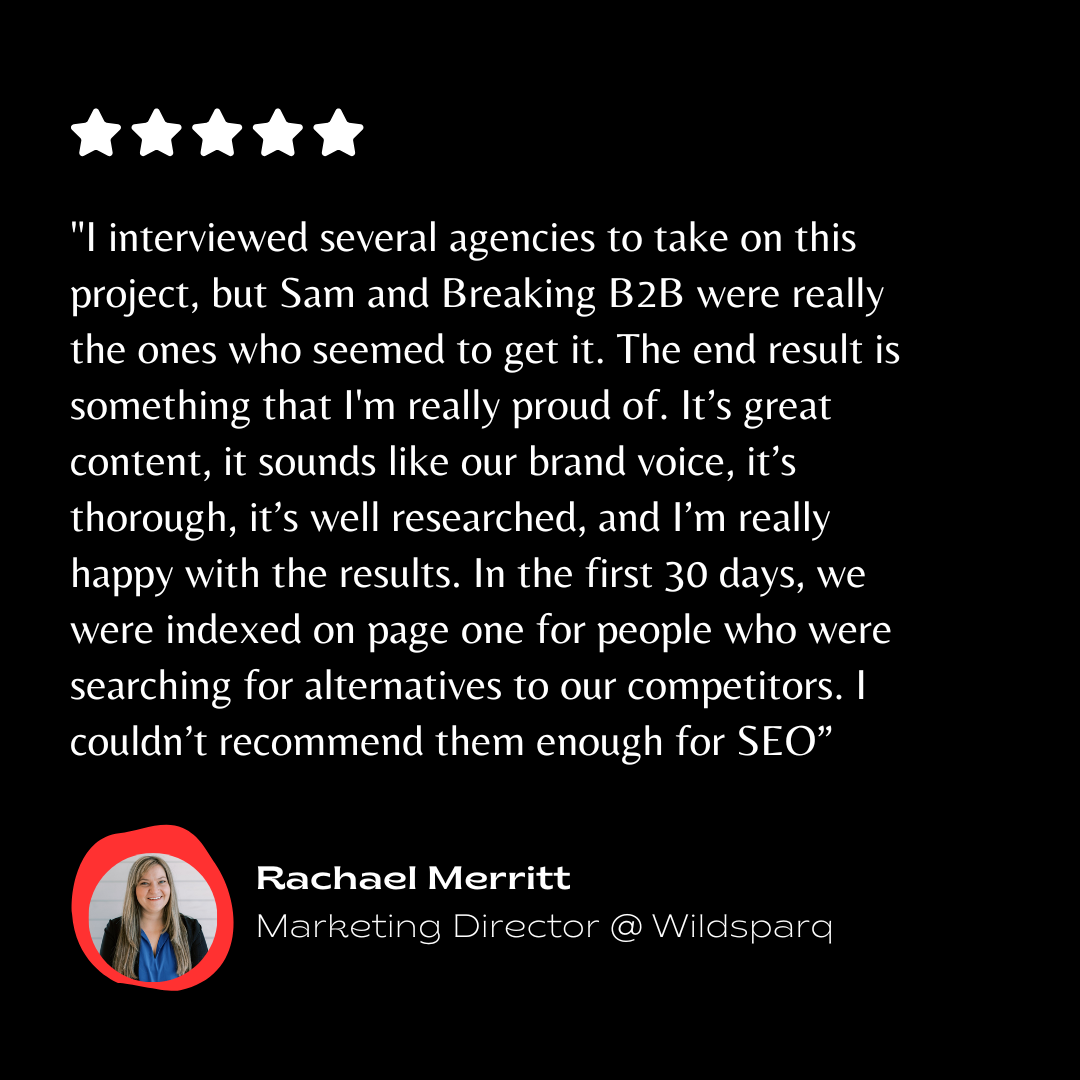
What Is B2B SEO ROI?
B2B SEO ROI tells you how much revenue your organic search strategy actually drives, relative to what you spend. But in B2B, this isn’t as simple as tracking clicks or first-touch leads.
Unlike B2C, where a buyer might search and buy in minutes, B2B buyers take weeks (or months), involve entire teams, and interact with your content across multiple touchpoints before converting.
That’s why measuring ROI means going beyond surface metrics like traffic or rankings. A qualified lead might first discover you through search, binge your blog, attend a webinar, and convert after a demo three months later. SEO started the journey, but it didn’t close it.
To get a true read on B2B SEO ROI, you need
multi-touch attribution, a way to connect early search activity to eventual pipeline and revenue. When done right, it shows what’s working, what’s wasting budget, and where to double down.
Why Measuring B2B SEO ROI Matters
If you’re not measuring ROI, you’re not managing growth. You’re guessing. Tracking B2B SEO ROI helps you make smarter decisions, tie marketing to revenue, and scale what actually works. Here’s why it’s critical:
- Prove SEO’s revenue impact: Show how organic search drives real pipeline, not just vanity metrics like traffic or impressions.
- Justify and defend budget: Clear ROI data gives you leverage when securing or expanding SEO resources.
- Align with sales and finance: ROI-focused SEO speaks the same language as your leadership team, which is revenue, not rankings.
- Identify high-performing content: Know which assets attract, convert, and contribute to closed-won deals.
- Cut wasted effort: Stop investing in keywords and content that don’t move prospects through the funnel.
- Forecast growth accurately: With ROI benchmarks, you can project future performance and plan more effectively.
When your
B2B SEO strategy is measured by impact, not just activity, it becomes a true growth lever.
How to Measure B2B SEO ROI
Step 1: Set Up Proper Attribution Tracking
Most B2B companies start with broken attribution. We’ve seen businesses invest six figures into SEO while relying on default Google Analytics setups, missing up to 60% of their actual conversions.
Begin by configuring
Google Analytics 4 properly for B2B attribution. Turn on enhanced measurement, define custom conversions for high-value actions, and create audience segments aligned with your buyer personas.

Next, standardize UTM parameters across all SEO-driven campaigns. Here’s a structure we recommend:
- utm_source=organic
- utm_medium=search
- utm_campaign=brand-keywords (or category-keywords)
- utm_content=page-type
Track every key conversion point—whitepaper downloads, demo requests, trial signups, and SQLs—with clear attribution paths.
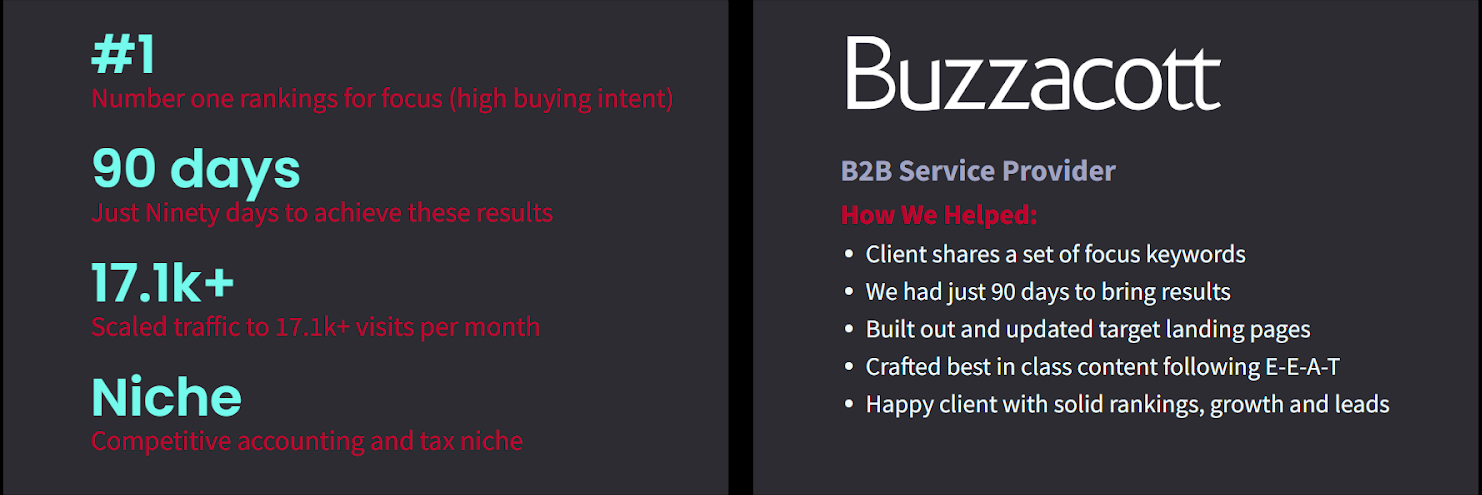
For example, when we rebuilt Buzzacott’s site, we baked attribution into every form and CTA. That overhaul revealed organic search was generating 17.1k+ than previously reported, proving just how much gets missed without full-funnel tracking.
Step 2: Define Your B2B SEO Metrics Framework
Vanity metrics are the silent killer of B2B SEO. We've seen companies celebrate a 200% increase in traffic, yet their revenue remains flat. The issue? They were tracking the wrong metrics and optimizing for volume instead of value.
To drive real business outcomes, anchor your SEO strategy around revenue-centric KPIs:
- Marketing Qualified Leads (MQLs) sourced from organic search
- Sales Qualified Leads (SQLs) with SEO as the first-touch attribution
- Customer Acquisition Cost (CAC) specific to organic channels
- Customer Lifetime Value (CLV) for SEO-acquired customers
- Pipeline and revenue influenced by organic touchpoints
Raw lead numbers aren’t enough. You need to implement a lead scoring model that accounts for buyer personas, company size, and behavioral signals. For example, a demo request from a mid-market tech company holds more value than a gated content download from a freelancer.
To validate long-term ROI, calculate CLV by tracking how long SEO-generated customers stay, what they spend, and their upsell potential. This turns SEO from a cost center into a growth engine.
One of
our B2B clients, Payara’s transformation started when they redefined success, from “organic traffic growth” to “qualified pipeline from search.” That shift clarified which keywords and content types truly moved the needle, and which ones didn’t.
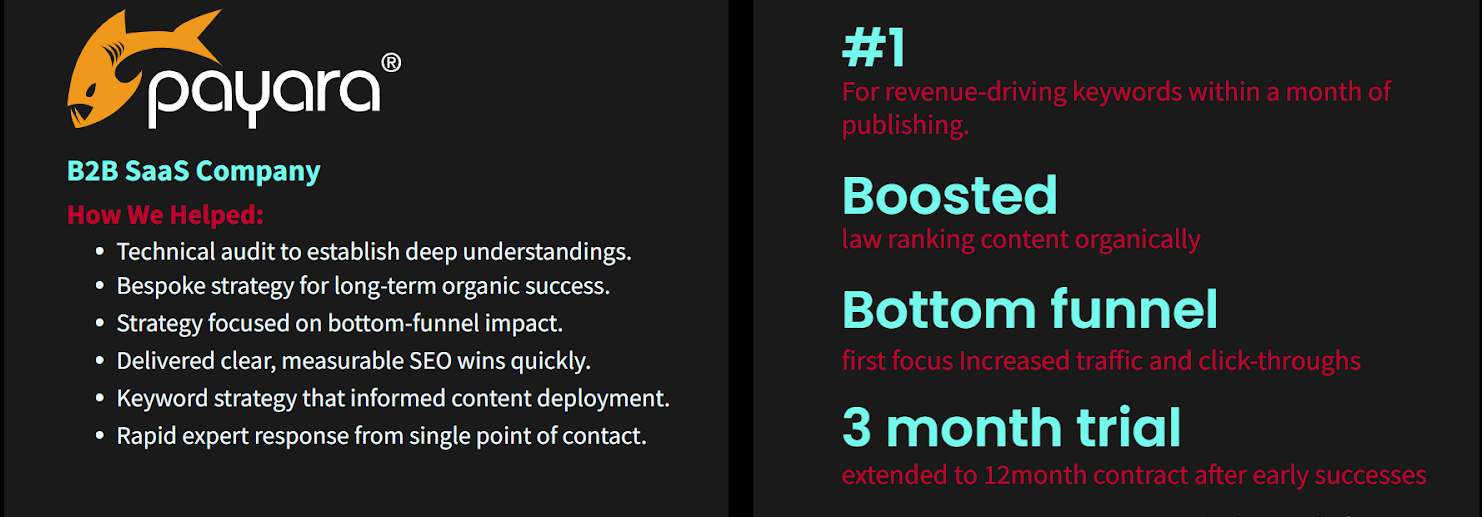
Step 3: Calculate Customer Acquisition Cost (CAC) from SEO
SEO often feels free until you account for the true investment. To get an accurate CAC, you need to track all costs: staff time, tools, content creation, technical optimization, and any external services.
For internal efforts, start by calculating the total hours your team spends on SEO and multiply that by fully loaded salaries. Include time from content writers, developers, and managers involved in strategy and oversight.
Then, layer in tool expenses: SEO platforms, analytics software, and any specialized tracking tools. Don’t overlook one-time costs like technical audits, migrations, or website redesigns.
Attribution modeling is essential at this stage. In B2B, buyers engage with multiple channels before converting. First-touch attribution helps credit SEO for early-stage awareness, while assisted conversions reveal SEO’s influence later in the journey.
To simplify this, use our SEO ROI Calculator as it helps model different attribution scenarios. Most B2B companies find their SEO CAC is 40–60% lower than paid channels when attribution is properly handled.
Key Takeaway: SEO’s value compounds over time. While your CAC might seem high in the first month, the same content and optimizations continue generating conversions for months or even years, without additional spend.
Step 4: Track Revenue Attribution Across the Funnel
B2B attribution shouldn't be limited to single touchpoints; it’s about capturing the full customer journey. Many companies rely on last-touch attribution, which severely underrepresents SEO’s role in driving early-stage awareness and consideration.
First-touch attribution highlights how SEO generates initial interest. Last-touch shows what ultimately drives conversion. But the real picture emerges with multi-touch attribution, which distributes credit across every stage of the buyer journey.
A weighted attribution model is often the most balanced approach. We recommend allocating 40% to first-touch, 20% to mid-funnel interactions, and 40% to last-touch. This reflects both SEO’s role in driving awareness and its contribution to final conversion.
Be sure to track the progression of Sales-Qualified Leads (SQLs) separately from MQLs. Not every lead progresses down the funnel, and understanding that conversion rate is key to optimizing for lead quality.
Step 5: Measure Long-Term Value and Retention
SEO’s true value reveals itself over time. Customers acquired through organic search often deliver higher lifetime value (LTV) and stronger retention compared to those from paid channels.
To surface this insight, track Customer Lifetime Value (CLV) by acquisition source. Look at key metrics like average deal size, contract duration, renewal rates, and churn. Compare these between SEO-driven leads and those from paid or outbound efforts.
Also, dig deeper into upsell and cross-sell behavior. Customers who first discover your brand through educational or problem-solving content often go on to become high-value users, advocates, and expansion opportunities.
In our experience, the trend is clear: customers acquired via SEO frequently show 20–30% higher CLV than their paid counterparts. They come in more informed, with realistic expectations, and are more likely to stick around for the long haul.
The Takeaway: Build retention and CLV analysis into your ROI model. A $10,000 CAC might seem steep, until you realize that the customer generates $100,000 over their lifecycle. That’s the compounding power of organic acquisition.
Step 6: Create Automated Reporting Dashboards
Manual reporting drains time and stalls momentum. Instead, build automated dashboards that pull directly from your attribution and analytics systems, delivering insights in real time and in formats tailored for different stakeholders.
At a minimum, your SEO dashboard should include:
- Monthly organic revenue attribution
- SEO CAC trends over time
- Pipeline contribution by keyword or topic clusters
- Customer lifetime value segmented by acquisition source
- Year-over-year ROI comparisons
Customize views for different audiences. For example, Marketing teams need detailed performance breakdowns by campaign, content type, and funnel stage. Executives care about high-level ROI, revenue trends, and cost-efficiency. Sales teams benefit from insights into lead quality, intent signals, and SQL conversion rates.
Take a cue from Checkwriters’ setup. Their executive dashboard features just three high-impact tiles—monthly revenue from SEO, active pipeline influenced by organic search, and lifetime value trends from SEO-acquired customers. Their CEO gets the full SEO performance story in under 30 seconds.
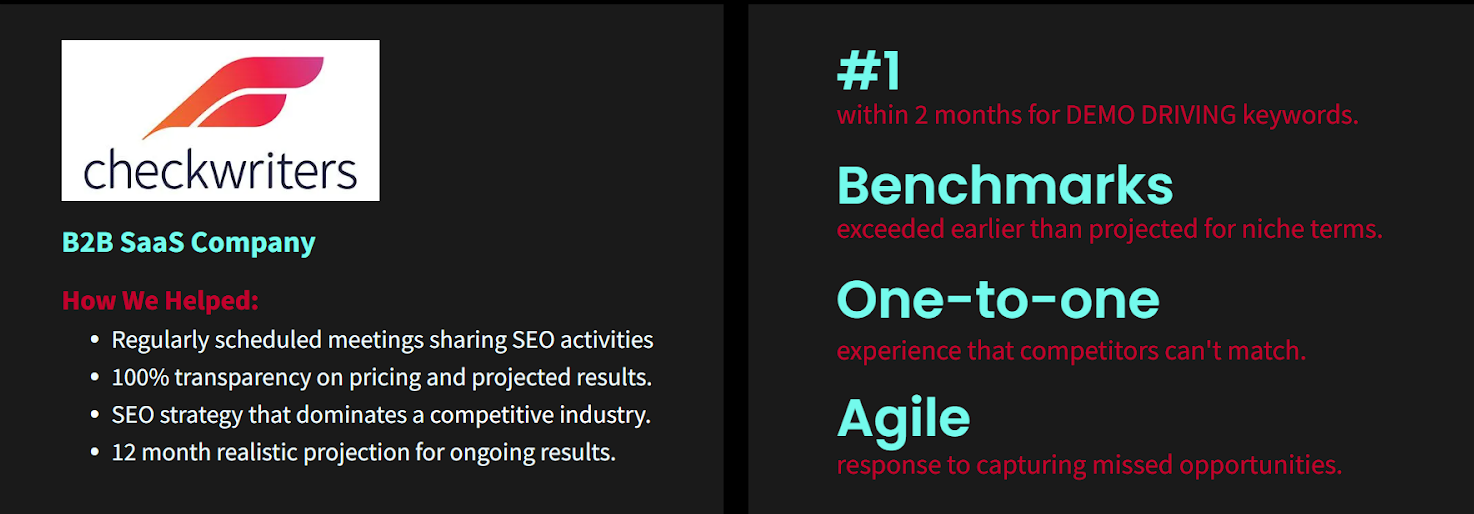
Finally, build in
automated alerts. If organic revenue drops 20% month-over-month, you shouldn’t find out at the next review. You should know the moment it happens.
How to Improve B2B SEO ROI
Once you're measuring the right metrics, the next step is optimizing for outcomes, not just activity. Here’s the first and most impactful strategy we recommend.
Strategy 1: Turn Traffic Into Pipeline with SEO Conversion Rate Optimization
Ranking is only half the job. The real ROI comes from converting traffic into leads—and then into revenue.
Start with your top SEO pages (by traffic or lead volume). These are your highest-leverage assets. Use heatmaps, session recordings, and form analytics to spot friction points.
Common issues we see again and again:
- Too many form fields
- Weak or generic CTAs
- No social proof or trust signals
- Vague value props
- Poor mobile UX or slow load times
Run A/B tests on headlines, CTAs, and layout. One small headline change can lift your conversions.
Also look for micro-conversion gaps. If visitors won’t download a guide, they’re not ready to book a demo. Create lower-commitment offers that build intent before asking for a meeting. This approach stacks small wins into big ROI gains.
Strategy 2: Upgrade Content Quality to Drive Compounding SEO Value
Google rewards depth, clarity, and expertise, especially in B2B. If your content is thin or outdated, your rankings (and ROI) will suffer.
Start by auditing your existing content. Look for:
- Posts with thin word counts or vague takeaways
- Outdated stats, broken links, or stale examples
- Pages that rank but don’t convert
Then get to work:
- Turn basic posts into
comprehensive, expert-driven guides
- Add real-world examples, updated stats, and insights from internal SMEs or customers
- Build
content clusters around high-value topics—interlinking related pieces to boost topical authority and keep users engaged
Fresh, well-structured content ranks better, gets shared more, and drives higher conversion rates. It’s one of the most reliable ways to lift B2B SEO ROI over time.
Strategy 3: Fix Technical SEO to Protect Rankings and Conversions
Technical issues don’t just hurt rankings, they quietly kill your funnel. One slow page or broken experience can tank conversions and bleed revenue.
Start with Core Web Vitals and page speed. Faster pages rank higher and convert better. Prioritize load time, visual stability, and mobile responsiveness.
Next, fix the basics:
- Resolve crawl errors and broken internal links
- Implement structured data to improve how your content appears in search (think FAQs, reviews, and rich snippets)
- Ensure your site is fully optimized for
mobile-first indexing, yes, even in B2B. Buyers research on phones, especially during off-hours or commutes.
Technical SEO isn’t glamorous, but it’s essential. Clean infrastructure supports everything else, like ranking, UX, and ultimately, ROI.
Strategy 4: Optimize Link Building for Authority and Pipeline
Not all backlinks are created equal. In B2B, the best links drive both domain authority and qualified traffic.
Here’s how to focus on ROI, not just link volume:
- Prioritize links from sites your buyers actually read. Think industry blogs, niche publications, and strategic partners
- Create linkable assets like original research, data studies, or in-depth guides that earn backlinks over time
- Build real relationships with journalists, contributors, and influencers in your space. Consistent engagement beats cold outreach every time
- Use tools like Ahrefs or SEMrush to track competitor backlinks and spot low-effort, high-value opportunities
The goal isn’t to build the most links. It’s to build the right ones. The kind that lift rankings and send real prospects into your funnel.
Strategy 5: Capture Nearby Demand with Local SEO
Local intent isn’t just for restaurants or retail. B2B buyers also search regionally, especially for services tied to support, logistics, or compliance.
Here’s how to make local SEO work for your funnel:
- Fully optimize your
Google Business Profile with up-to-date descriptions, services, photos, and customer reviews
- Create
location-specific landing pages (e.g., “Managed IT Services in Austin”) that speak directly to regional pain points
- Build
consistent local citations across directories to strengthen local authority
- Actively encourage
customer reviews. They don’t just impact rankings, they drive trust and conversions
If you’re a regional B2B service provider, showing up in “near me” and geo-based searches is low-effort, high-return SEO. It’s one of the fastest ways to turn search visibility into sales calls.
Best Practices for Improving B2B SEO ROI
Want better SEO returns? It starts with a strategy that maps to revenue, not just rankings. These best practices turn your SEO into a true growth engine:
Map SEO to the Sales Funnel
Don’t just rank, convert. Match keywords to buyer journey stages:
- Top-of-funnel: Terms like “marketing automation trends” build awareness
- Mid-funnel: Comparison content educates and builds trust
- Bottom-funnel: Queries like “HubSpot alternatives” capture high-intent leads
Optimize each stage for conversion:
- Awareness content: Focus on education and email capture
- Consideration content: Add case studies and product comparisons
- Decision content: Push trials, demos, and direct sales CTAs
Pro tip: Integrate SEO with lead nurturing. If someone downloads your “B2B SEO Guide,” follow up with a tailored email sequence that drives action.
Prioritize High-Intent, Commercial Keywords
Search volume alone doesn’t pay the bills. Focus on keywords that signal buying behavior, such as:
- “[Brand] vs [Brand]” comparisons
- “Alternative to [competitor]” queries
- Feature-specific searches
- Pricing or ROI-focused terms
- “Best [tool] for [use case]” phrases
A keyword with 1,000 monthly searches and a 5% conversion rate will outperform a 10,000-volume term with 0.5% conversion. That’s ROI-driven SEO.
Use Account-Based SEO to Win Strategic Deals
ABM isn’t just for outbound, it works in SEO too.
- Research your target accounts
- Identify their pain points, language, and compliance needs
- Create content that speaks directly to their reality
Example: If you’re targeting Netflix, don’t write about “media SEO.” Write about “streaming platform discoverability challenges.” Hyper-relevant content builds trust and gets shared internally.
Optimize Technical SEO and Mobile Performance
Speed, structure, and mobile UX are non-negotiable.
- Core Web Vitals affect both rankings and conversions.
- Mobile-first indexing means your mobile experience
is your SEO.
- B2B buyers often research on mobile between meetings. If your site lags, they bounce.
Start with high-impact pages: your homepage, landing pages, and service pages. Blog content can follow in waves.
Even a 2% lift in mobile conversion compounds across all organic traffic and directly improves ROI.
Achieve B2B SEO ROI With Breaking B2B
Measuring B2B SEO ROI requires shifting from vanity metrics to revenue attribution. The companies that master this approach see SEO as a revenue engine, and not just a traffic generator.
At Breaking B2B, we've built our entire methodology around this principle. Our web design services ensure proper tracking implementation, our SEO services focus on reducing customer acquisition costs, and our podcast production supports account-based marketing efforts.
Ready to calculate your potential B2B SEO ROI? Use our
free calculator to model different attribution scenarios and discover your true organic search opportunity.



